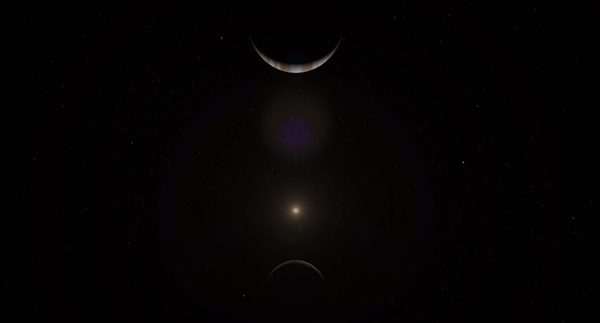The beauty of our solar system is on full display in the below video based on a recent flyby of Jupiter and its moon Ganymede by NASA’s Juno spacecraft.
On June 7, 2021, Juno came within 645 miles (1,038 kilometers) of Ganymede, closer than any other craft in the last two decades. Ganymede is the solar system’s largest moon — larger even than the planet Mercury — and is the only moon in our system to have a protective bubble of charged particles, called a magnetosphere.
At the beginning of the animation, which is based on imagery returned by Juno, Jupiter and Ganymede face one another, the Sun a distant fuzzy yellow circle in a sea of black, as Juno dives toward the icy moon.
As Ganymede spins into view, Juno captures its ice-encrusted surface, including several of the moon’s light and dark regions, and the crater Tros. Researchers suspect that the light and dark regions are pure and dirty ice respectively.
After swooping past Ganymede at a relative speed of 41,600 mph (67,000 km/hr), Juno quickly leaves the moon behind and turns its attention to Jupiter. It takes the craft a mere 14 hours and 50 minutes to travel the 735,000 miles (1.18 million km) between the two celestial bodies.
Jupiter’s spectacular cloud tops spark with lightning — an added, animated touch based on Juno data — as Juno comes within 2,100 miles (3,400 km) of the planet. Eight massive storms, known as the “string of pearls,” appear in the gas giant’s southern hemisphere as white ovals.
Juno has been orbiting Jupiter since 2016 and performed its 35th jovian flyby on July 21.










